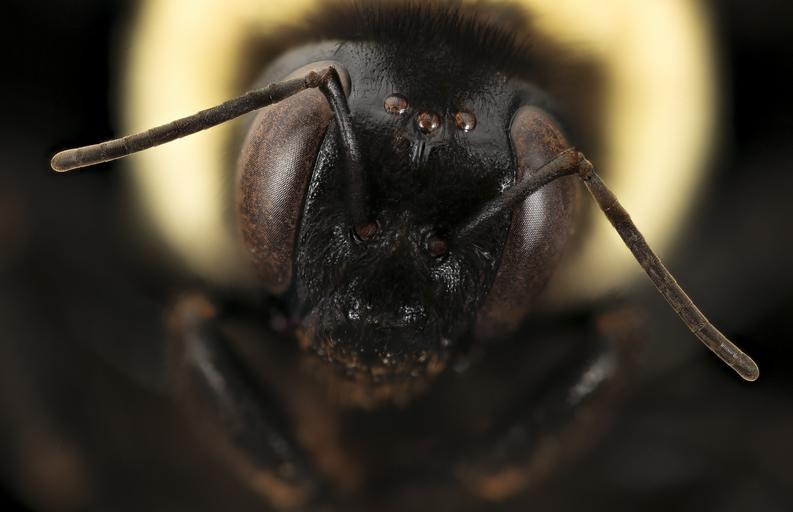MAKE A MEME
View Large Image

| View Original: | Bombus_fraternus,_f,_face,_Charleston_Co.,_SC_2016-09-13-11.21.jpg (5182x3347) | |||
| Download: | Original | Medium | Small | Thumb |
| Courtesy of: | www.flickr.com | More Like This | ||
| Keywords: zerene stacker zerenestacker stackshot geological survey geologicalsurvey united states geological survey unitedstatesgeologicalsurvey department of the interior departmentoftheinterior droege biml bee inventory and monitoring laboratory beeinventoryandmonitoringlaboratory bug bugs canon close-up closeup macro insect patuxent wildlife research center patuxentwildliferesearchcenter pwrc usgs dofstacking stacking canon mpe65 canonmpe65 taxonomy:binomial=bombus fraternus taxonomy:binomial=bombusfraternus bee bees apoidea hymenoptera pollinator nativebee south carolina southcarolina mimi jenkins mimijenkins charleston watermelon animal depth of field Bombus fraternus. The Southern Plains Bumble Bee. This crisp, handsome and short-faced bee suffers from lack of an adequate publicist. Thought, several other Bumble Bees in its clan, to be in decline from introduced pathogens. It gets little mention in the bee press. Perhaps because it inhabits the flatwoods and flatlands, where heat, ticks, poisonous snakes, and topographic monotony keeps the well-healed naturalists thin on the ground. Indeed it appears to be suffering and perhaps more so than some other groups, but we know little. So, how nice to have Mimi Jenkins show up with a nice string of them from the land of watermelons outside of Charleston. Perhaps they are not so rare after all, though they once occurred in the very neighborhood of my lab and have not been seen there in over 100 years....and believe you me we have looked. Kelly Graninger, star intern, took these pictures. ~~~~~~~~~~{{{{{{0}}}}}}~~~~~~~~~~ All photographs are public domain, feel free to download and use as you wish. Photography Information: Canon Mark II 5D, Zerene Stacker, Stackshot Sled, 65mm Canon MP-E 1-5X macro lens, Twin Macro Flash in Styrofoam Cooler, F5.0, ISO 100, Shutter Speed 200 Beauty is truth, truth beauty - that is all Ye know on earth and all ye need to know " Ode on a Grecian Urn" John Keats You can also follow us on Instagram - account = USGSBIML Want some Useful Links to the Techniques We Use? Well now here you go Citizen: Art Photo Book: Bees: An Up-Close Look at Pollinators Around the World www.qbookshop.com/products/216627/9780760347386/Bees.html... Basic USGSBIML set up: www.youtube.com/watch?v=S-_yvIsucOY USGSBIML Photoshopping Technique: Note that we now have added using the burn tool at 50% opacity set to shadows to clean up the halos that bleed into the black background from "hot" color sections of the picture. www.youtube.com/watch?v=Bdmx_8zqvN4 PDF of Basic USGSBIML Photography Set Up: ftp://ftpext.usgs.gov/pub/er/md/laurel/Droege/How%20to%20Take%20MacroPhotographs%20of%20Insects%20BIML%20Lab2.pdf Google Hangout Demonstration of Techniques: plus.google.com/events/c5569losvskrv2nu606ltof8odo or www.youtube.com/watch?v=4c15neFttoU Excellent Technical Form on Stacking: www.photomacrography.net/ Contact information: Sam Droege sdroege@usgs.gov 301 497 5840 Bombus fraternus. The Southern Plains Bumble Bee. This crisp, handsome and short-faced bee suffers from lack of an adequate publicist. Thought, several other Bumble Bees in its clan, to be in decline from introduced pathogens. It gets little mention in the bee press. Perhaps because it inhabits the flatwoods and flatlands, where heat, ticks, poisonous snakes, and topographic monotony keeps the well-healed naturalists thin on the ground. Indeed it appears to be suffering and perhaps more so than some other groups, but we know little. So, how nice to have Mimi Jenkins show up with a nice string of them from the land of watermelons outside of Charleston. Perhaps they are not so rare after all, though they once occurred in the very neighborhood of my lab and have not been seen there in over 100 years....and believe you me we have looked. Kelly Graninger, star intern, took these pictures. ~~~~~~~~~~{{{{{{0}}}}}}~~~~~~~~~~ All photographs are public domain, feel free to download and use as you wish. Photography Information: Canon Mark II 5D, Zerene Stacker, Stackshot Sled, 65mm Canon MP-E 1-5X macro lens, Twin Macro Flash in Styrofoam Cooler, F5.0, ISO 100, Shutter Speed 200 Beauty is truth, truth beauty - that is all Ye know on earth and all ye need to know " Ode on a Grecian Urn" John Keats You can also follow us on Instagram - account = USGSBIML Want some Useful Links to the Techniques We Use? Well now here you go Citizen: Art Photo Book: Bees: An Up-Close Look at Pollinators Around the World www.qbookshop.com/products/216627/9780760347386/Bees.html... Basic USGSBIML set up: www.youtube.com/watch?v=S-_yvIsucOY USGSBIML Photoshopping Technique: Note that we now have added using the burn tool at 50% opacity set to shadows to clean up the halos that bleed into the black background from "hot" color sections of the picture. www.youtube.com/watch?v=Bdmx_8zqvN4 PDF of Basic USGSBIML Photography Set Up: ftp://ftpext.usgs.gov/pub/er/md/laurel/Droege/How%20to%20Take%20MacroPhotographs%20of%20Insects%20BIML%20Lab2.pdf Google Hangout Demonstration of Techniques: plus.google.com/events/c5569losvskrv2nu606ltof8odo or www.youtube.com/watch?v=4c15neFttoU Excellent Technical Form on Stacking: www.photomacrography.net/ Contact information: Sam Droege sdroege@usgs.gov 301 497 5840 | ||||